Learning Anatomical Terms in a Fun Way!
Are you struggling to learn the basic Anatomical Terms? Well, here's a short story that'll never let you forget them.
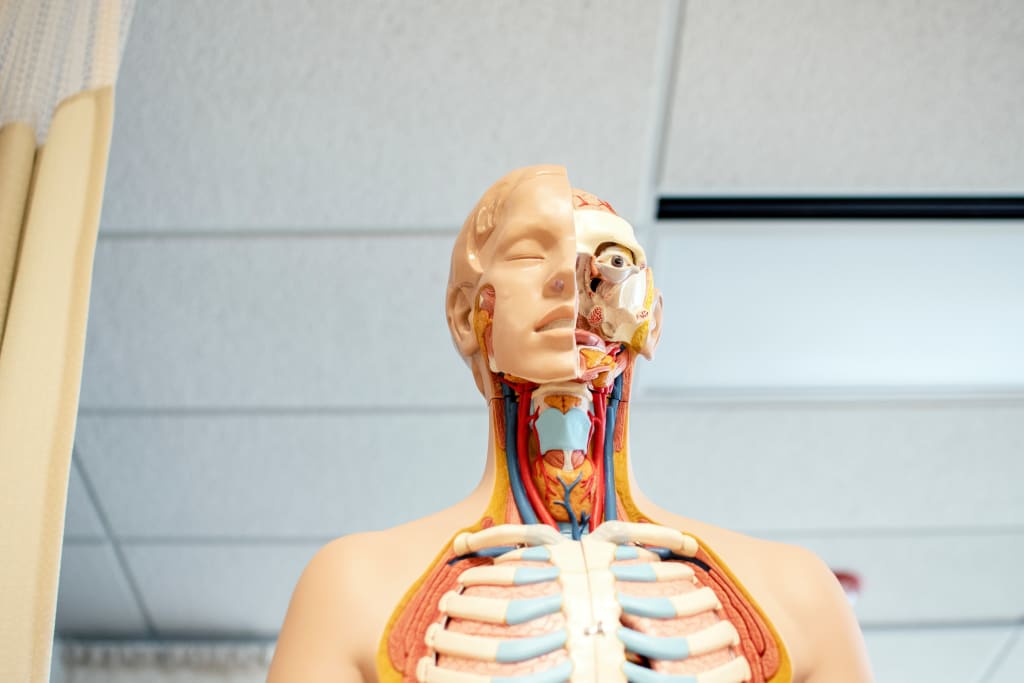
It was off time and Jenn, a first-year Medical student, got totally exhausted after attending his college. He took a seat on his College bus and reached home. He found the home empty, took out his lunch from the refrigerator, and ate in a hurry. After getting fresh, he slumped onto his bed and went into a deep sleep. Jenn woke up to the sound of his alarm, which he set for 5:00 PM. After getting fresh, he went downstairs to find his parents having tea.
"Good Evening son! How was your day today?" his Dad asked.
"It was mostly a theory day, so kind of boring," he replied, taking a seat.
"It has only been a week of you going to the College, so exhaustion is a major factor. You'll get used to it," his Mom said while pouring him a cup of tea.
"Jenn, it's going to be your first lesson of Medical studies with me. Which topic do you want to start with?" his Dad asked.
"I want to get a grip on the basic terminologies of Anatomy," he replied, taking a biscuit off the plate.
"Alright, let's finish the tea first. You're never going to forget the lessons with me," his Dad winked.
"I hope they're fun," Jenn said, laughing out.
"You'll see for yourself, boy," his Dad smiled.
"Let's get going then. I'm getting curious about your teaching style in terms of Medical."
"Alright, bring out your textbook and meet me in the lawn," his Dad said.
"LAWN?" Jenn asked with a look of surprise.
"Yes, hurry up. Don't waste time now," his Dad replied.
Jenn hurriedly brought out his textbook and met his Dad in the lawn.
"So, we're going to study all the basic terms along with planes and axes today. Okay?" his Dad said.
"Alright!"
Jenn took a seat on one of the chairs in the lawn that his Dad said in a loud voice, "Stand up Jenn, you're not allowed to sit."
"What? Are we going to study standing?"
"Yes, what is the Anatomical position?"
“Oh, I get it. Anatomical position is the standard position of the body from which we can tell the location of any organ in the body.”
“Right! Now, stand in the anatomical position Jenn.”
Jenn stood up looking forward. His body erect, with arms by the side of the body and palms facing forwards.
“Is that right, Dad?”
“Turn your feet slightly outwards. That's the correct position.”
“Why do we need it though?”
“There are many positions of the body a person might adopt, and it wouldn't be easy to explain the location of an organ in general, without having a standard position. Whenever we talk about the location of an organ in the body, we always give reference to another organ. For example, if I talk about the location of the heart in the body, I will say the heart is superior to kidneys and for that, I need to allot a standard position which is called the anatomical position of the body. Your body should be erect, arms by the side of your body, palms facing forwards, face looking straight ahead and feet turned slightly outwards.”
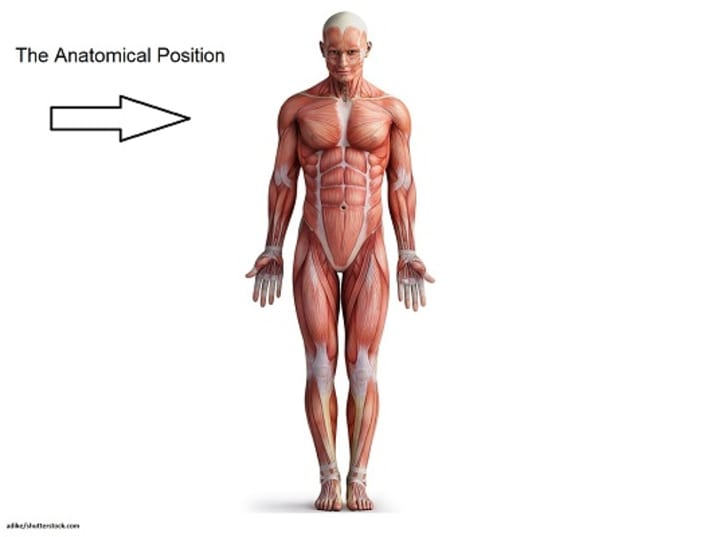
“Got it, Dad.”
“Perfect! Now let's move onto the planes and axes. Planes are imaginary lines that divide a body into two parts to study the body easily. Tell me, how many planes are there?”
"There are three planes. I just know the names, Sagittal, Coronal, or Frontal and Transverse planes.”
“Alright. Imagine a line passing through the middle of your body, dividing the body into right and left halves. It is called the Sagittal plane.”
“OK!”
“Now, imagine a line passing through your body, dividing it into anterior and posterior halves, it is the Coronal or frontal plane. Anterior means front and Posterior means back.”
“Got it.”
“OK, next we have the Transverse plane. It divides the body into upper and lower halves. Remember, sagittal and frontal planes are vertical planes while the transverse plane is a horizontal plane and is at 90 degrees to all vertical planes.”
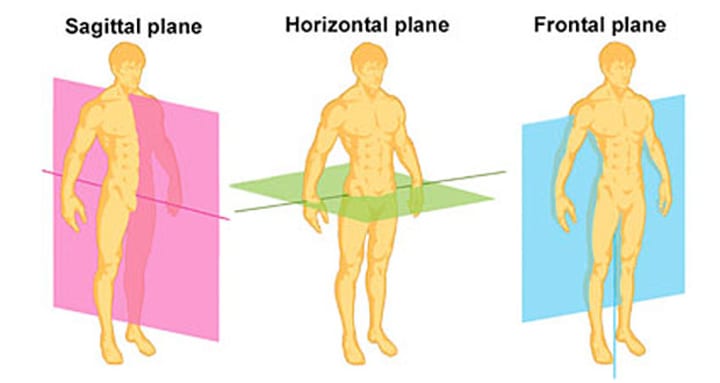
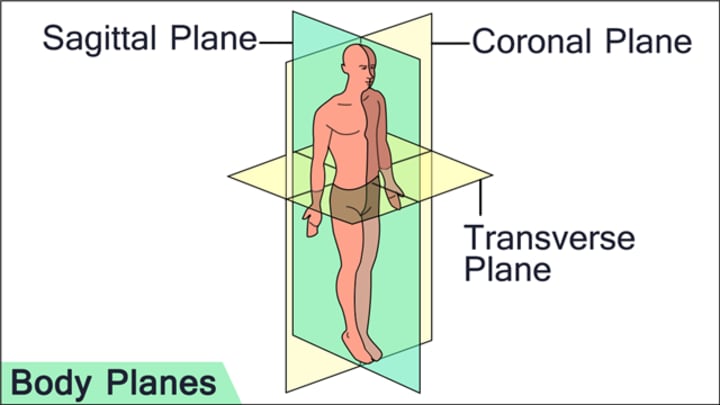
“Alright.”
“Now to understand this better, perform elbow flexion and extension.”
Jenn flexed his elbow, then extended it.
“Flexion and Extension take place in the Sagittal plane. Now, we’ll take a look at the movements of the frontal lane. Adduction means moving towards the body and abduction means moving away from the body. Move your arm away from your body.”
Jenn moved his arm away from the body.
“That is abduction. Move it towards your body,” Jenn did so, “this is adduction, these two movements, abduction and adduction take place in the frontal plane.”
“Alright!”
“Rotate your shoulder inwards... this is Internal rotation. Now, rotate it outwards... That is External rotation. Rotations take place in the horizontal plane.”
“OK!”
“Let's move onto the axes. Axes are imaginary lines around which movements take place. There are three axes, one for each plane. Sagittal axis, Frontal axis, and Vertical axis. Sagittal axis is of the sagittal plane, the frontal axis is of frontal plane, and the vertical axis is of the horizontal plane.”
“That's a little bit confusing.”
“No, just needs some understanding. The planes and axes are perpendicular to each other. The sagittal axis is perpendicular to the frontal plane, the frontal axis is perpendicular to the sagittal plane and the vertical axis is perpendicular to the horizontal plane. Which means, the movements of the frontal plane take place around the sagittal axis, the movements of the sagittal plane take place around the frontal axis, and the movements of the transverse plane take place around the vertical axis.”
“Okay, I got this. Frontal and Sagittal are kind of relatives while Horizontal makes it obvious that vertical will be its opposite axis.”
“Perfect! Now perform the movements again to get a better understanding.”
Jenn started performing the planar movements.
“Good. Now perform a squat and a lunge and tell me in which plane do they take place.”
Jenn performed a squat and said, “Squat is in the Sagittal plane,” he then performed a lunge and said, “Lunge is also in the sagittal plane around the frontal axis.”
“Correct! You got this. Now perform some leg raises on any side of your body.”
Jenn performed leg raises on his right side, “Since the side leg raises are abduction and adduction movements of the hip joint, so that's in the frontal plane and around the sagittal axis.”
“Well done! Now perform hip swirls.”
“That's taking place in the horizontal plane since it is a rotational movement, around the vertical axis.”
“Nice! You've got a good hold of it. Haven't you?”
“Of course, I’m a talented student, Dad. You should be thankful for having me, you won't need to explain things over and over again,” he replied laughing.
“Oh Yeah! Well, you should be thankful that I'm your Dad then,” both started laughing, “So, the lesson isn't over yet. We need to do the terms of relationship used to describe the location of organs in the body.”
“Oh man! Give me a break for five minutes.”
“Go have it.”
“I'll just check on my notifications.”
“Five means five.”
“Yeah, yeah, Dad!”
Jenn took out his phone from the pocket and started using it. His dad took a walk around the lawn.
“My time’s over Dad. I’m eager to study more.”
“Wow, are you the real Jenn? He was never so obedient.”
“Dad, what do you mean?” Jenn said, raising his brows.
“I'm just kidding around,” he replied while laughing. Jenn joined in the laughter.
“Alright, back to studies. Which term will I use to tell the location of kidneys with respect to heart?”
“Inferior? Like we’ll say kidneys are inferior to heart.”
“Right and for the location of the heart with respect to kidneys?”
“Superior. The Heart is superior to the kidneys.”
“What are the two other terms used for the superior position?”
“Upper and Lower?”
“No. In scientific terms, it’s Cephalic or Cranial. Both are terms related to the brain, and since the brain is above everything else, so we use it to represent something that is on the upper side. ”
“Cephalic and Cranial. Got it.”
“OK! Are there terms for inferior too?”
“Caudal is another term for the inferior position. Caudal means like a tail and a tail is always on the lower side, so we use it for the inferior position.”
“Alright, I got it.”
“So which term is used to say that an organ is towards the middle of the body with respect to another one?”
“Medial, meaning towards the middle of the body for example if I’m talking about the position of heart with respect to the lungs, I'll say that the heart is medial to the lungs.”
“Right. And Lateral means something that is away from the middle of the body. Now, give me an example.”
“If we're talking about lungs and heart, we’ll say lungs are lateral to heart.”
“Any other example?”
“Umm... Torso is medial to the arms and arms are lateral to the torso.”
“Good! Now let's move onto Contralateral and Ipsilateral. Contralateral means on the opposite side. Something that is contrary.”
“Like, can we say heart and upper limb are contralateral to each other.”
“Yes, nice! Ipsilateral means on the same side of the body. If an organ is on the right side, the other should also be on the right side to be called Ipsilateral.”
“Like, the right arm and the right leg are Ipsilateral to each other.”
“Correct! Now, do you know about the palmar and plantar surfaces?”
“That's obvious by the name. Palmar means palm surface,” he held out his palm, “and plantar means the sole of the foot.”
“Good one! Now we'll talk about the superficial and deep terminologies. Superficial means something that is external, that is visible over the body. Like your nose, ears, eyes.”
“Okay, and deep is something that is deep and not visible on the external surface.
“Right, and examples are all the organs inside our body that we cannot see.”
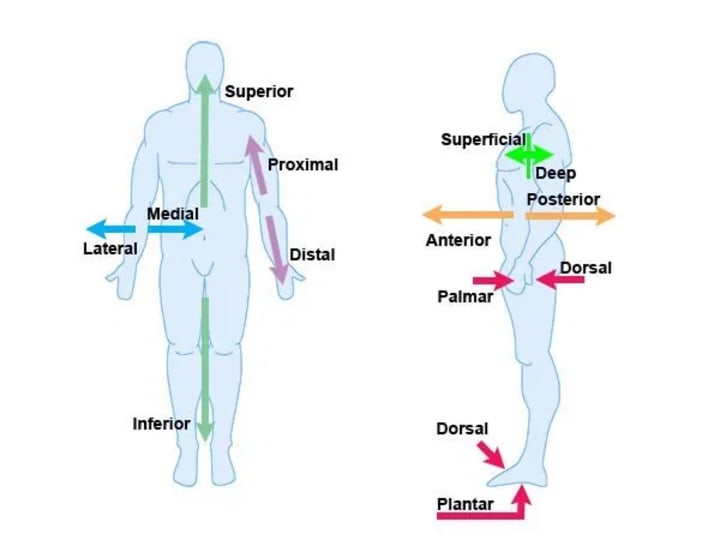
“Okay, I get confused with ventral and dorsal surfaces.”
“Hmm, not much difficult. Ventral is the front part of our body and Dorsal is the back part of our body. Actually, the dorsal surface is used to represent the upper part of animals since they use all the limbs to walk, like a cat, a dog, and so on. Since, we’re humans and we stand on our hind legs, so our back part becomes the dorsal surface and the belly side is the ventral side. If you want to understand it better, come into a kneeling position and tell me which is the ventral and which is the dorsal surface.”
Jenn came onto all fours in a kneeling position and said, “The upper part, means my back is the dorsal surface and the lower side, belly side is the ventral surface.”
“Perfect! You got this. You should know about the proximal and distal parts of the body.”
“Alright! Proximal is near the body and distal is away from the body. Right?”
“Perfect, so our lesson for Anatomy today is done. Don't forget this ever again. We'll revise it after a break.”
“I won't even need to open my textbook, Dad. Let's play soccer now before studying ."
"Sure!"
The day passed, full of lessons along with fun.
Another day started, Jenn reached his college and found his friend, Dan, sitting on a bench in the College ground. He was staring at his textbook, not bothering to look away.
"Hey Dan, you okay?" Jenn called out to him while shaking his shoulder.
"Umm, yeah I'm good. Did something happen?" He asked, coming back from his thoughts.
"You were lost in the textbook," Jenn replied, giving a worried glance.
"Sorry. Anatomy's got my mind rolling," he replied laughing.
"Man gather yourself up. We have a lecture in like ten minutes," Jenn said patting Dan on the back.
"Alright. Let's get going," Dan said picking up his textbook in one hand and slumping the bag onto his shoulder.
"Don't worry about Anatomy. I'm here for you," Jenn said assuring Dan.
"Thanks, dude. I know you'll ace the studies since you have a Doctor as your father," Dan said smiling.
"You're gonna ace it with me. There is no doubt about it," Jenn said smiling back.
About the Creator
Syeda Ayesha Arshad
Ayesha, a Medical Student & Wattpad Ambassador from Pakistan, a Content writer, interested in writing fiction stories ranging from Horror & Mystery to epic adventures & non-fiction on Trendy topics. Go enjoy the stories and articles!






Comments
There are no comments for this story
Be the first to respond and start the conversation.